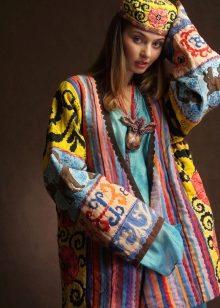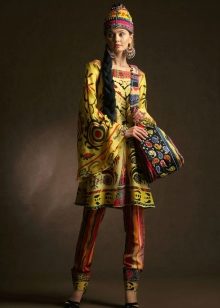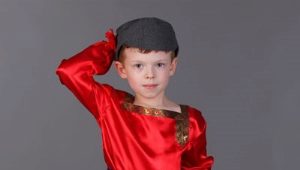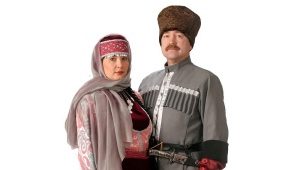Uzbek national costume

The traditional costume tells about the history and characteristics of the nation. It has been formed over the centuries, which means that by carefully studying it, one can trace the whole life of the people.
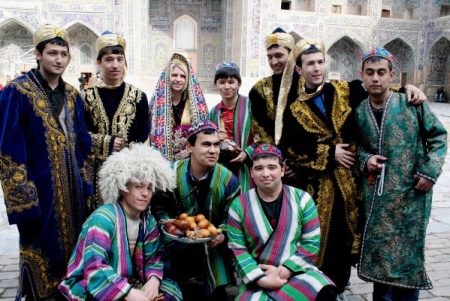
A bit of history
Uzbeks are a people with a rich history and interesting traditions. Being visiting Uzbeks, you will definitely be given tea and believe me, tea drinking will not end with one cup. And pouring another cup, they will ask: with respect or without? Do not be surprised that if you answer in the affirmative, only the bottom of the cup will be covered with tea. Such are the traditions of hospitality and the host will be happy to pour tea to the dearest guest.
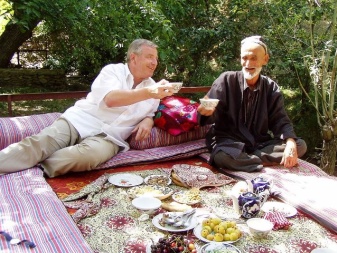
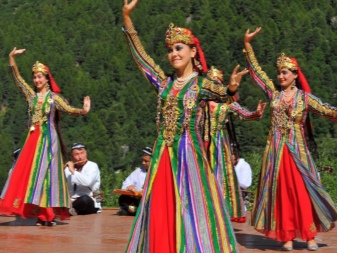
Uzbeks are friendly and patient people. Confessing Islam, Uzbeks respect each faith. Their own confession prescribes daily prayer, for which it is necessary to dress in closed and comfortable clothes. So, under the influence of faith, the Uzbek national costume was created.
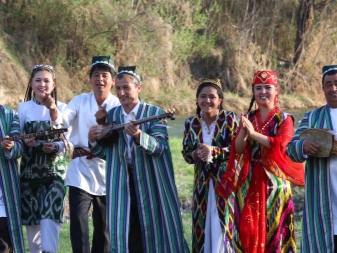

Peculiarities
The Uzbek costume is easy to distinguish from any other, because there are features in it that correspond exclusively to Uzbeks.

Colors and shades
The color scheme of the national costume varied depending on the location of the Uzbeks. Thus, the Surkhandarya region was famous for its red color scheme.An interesting fact is that, despite the color peculiarities in each region, no one wore black and dark blue suits for fear of attracting bad luck.

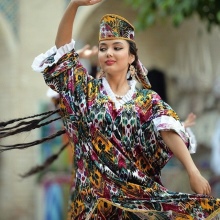
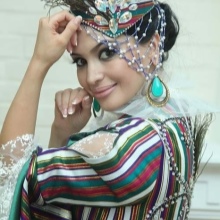
The palette of colors in women's clothing betrayed not only the delicate taste of beauties, but also their position in society. For example, ladies whose husbands held a high position dressed in clothes in blue and purple hues, artisans in green.
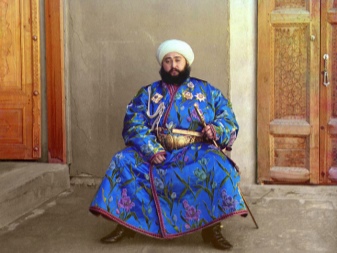

Fabrics and fit
The Uzbek people love rich fabrics. For example, the top of national robes is made of velvet or corduroy. It is worth saying that dressing gowns were worn not only in summer, but also in the cool season, and this could not but affect the types of fabric. So, warm models of robe-chapan are insulated with a layer of camel wool or cotton wool.
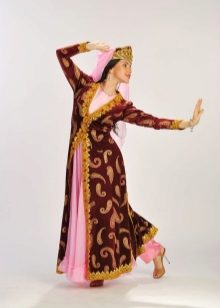

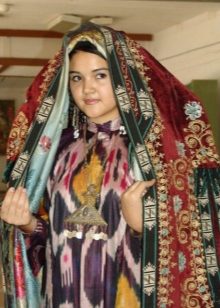
The cut of the national costume was simple and did not differ by sex and age. In most cases, clothes were sewn from straight pieces of fabric; in small remote villages, this fabric was not even cut, but torn along a straight thread.
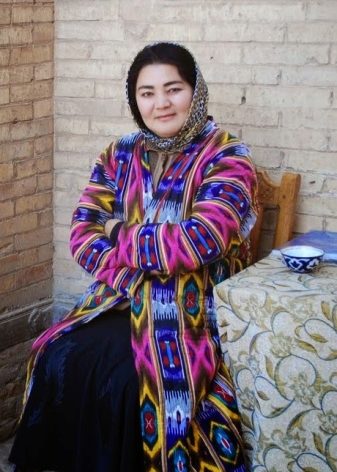
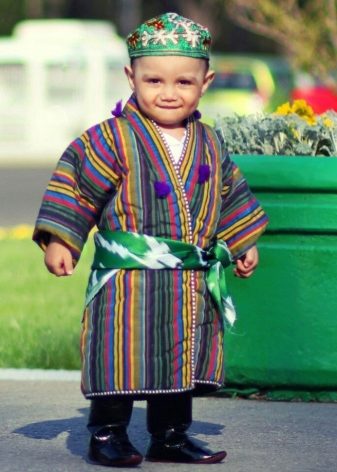
Later, for a shirt, a straight piece of fabric was bent, creating the front and back parts, additional pieces were sewn to the sides, and a gusset was placed under the armpit. It is worth saying that the pants were the result of skillful stitching of straight pieces of fabric.
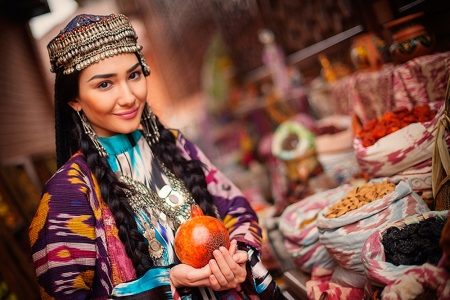
Varieties
Despite the similarity in cut, men's and women's suits have their own fundamental features.
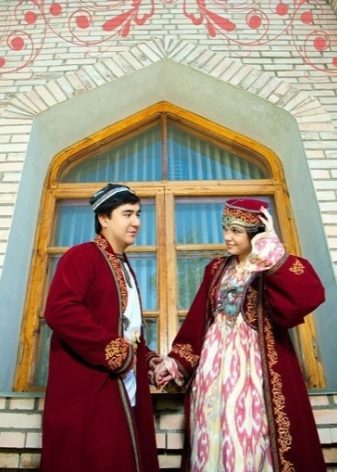

- The first important element for men is a chapan. This quilted bathrobe is designed not only for the home, but also for everyday life and even celebrations. Festive models are decorated with rich embroidery with gold threads. Replaces a dressing gown and outerwear, if it has a heater.Interestingly, colorful chapans are still popular far beyond the borders of Uzbekistan, they become an expensive gift for beloved men and colleagues.
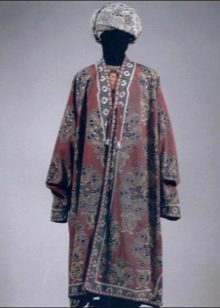


A shirt is an integral part of the Uzbek wardrobe. Her first models were sewn in length to the knees, but now you can find a more comfortable length to the middle of the thigh. Referred to as a kuilak, it can have a vertical neckline to the chest line or a horizontal neckline from shoulder to shoulder.
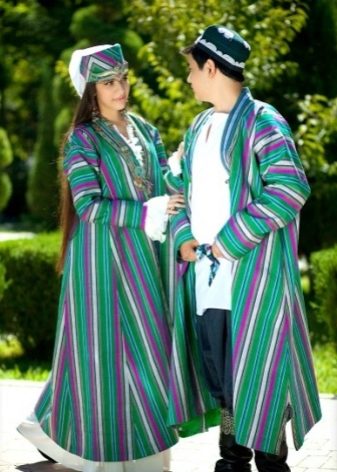
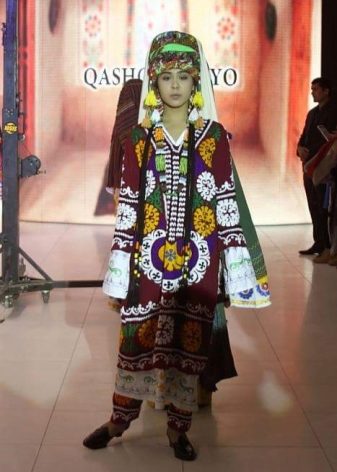
Wide trousers are an obligatory part of the Uzbek costume. From top to bottom, trousers are narrowed, providing convenience during walking.

A man's shirt or dressing gown is girded with a wide belt, which, it is worth saying, deserves admiration in some models. Belts for celebrations are made of luxurious velvet, decorated with beads, symbolic embroidery and complemented with amulets.
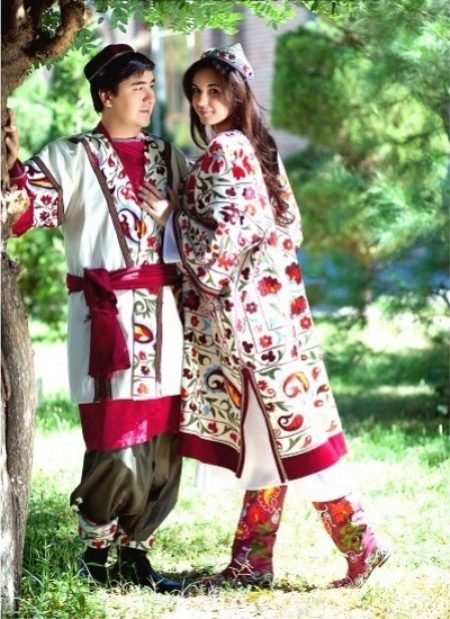
- Woman suit Uzbek beauties consisted of a tunic-like dress. The first models reliably covered the entire body and reached the length of the ankles. The dress was made using straight pieces of fabric and was not much different from a men's shirt. Later, a feminine yoke and gathered cuffs appeared on the dress.

In addition to the dress, the Uzbek woman also wore wide trousers without fail. They were distinguished from men by a hem decorated with braid. The same chapan served as outerwear. After some time, women began to dress in a camisole, as well as in feminine vests.
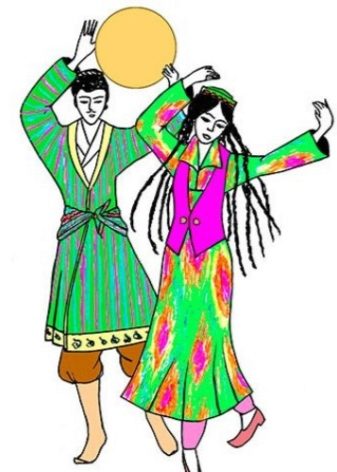
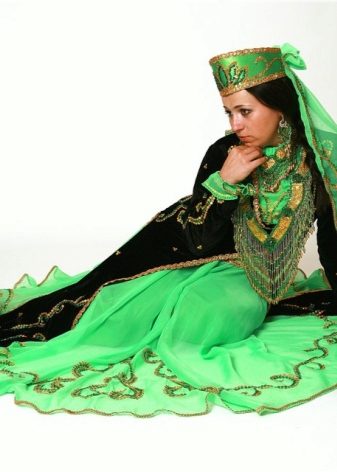
- Children's national costume similar to male and female. Often the choice is stopped at the factory options. Knitted suits are especially popular. An amulet is attached to the headdress of the child, protecting from the evil eye.
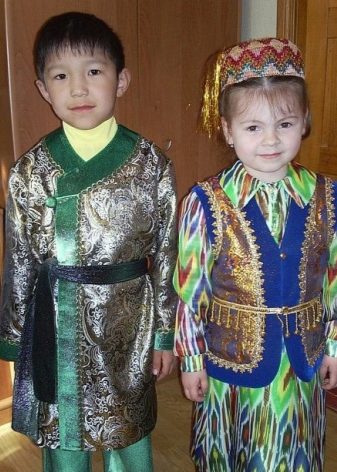

Accessories and shoes
If the costume, according to the canons of Islam, should be restrained, then Uzbek women are not limited in jewelry.Gold and silver in the form of earrings, bracelets and rings are an essential attribute of the Uzbek image. Symbols and amulets are applied to gold jewelry, protecting a woman and her family.

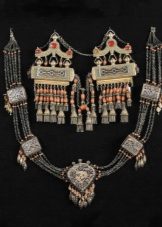
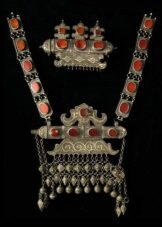
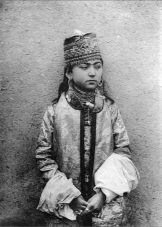
Speaking of headdresses, initially the woman was wearing a veil. Black was the everyday choice. It is interesting, but they preferred to wear it exclusively when leaving the gates of their own house, afraid to attract adversity to the family with black. Later, the veil was replaced by scarves and skullcaps-duppi.
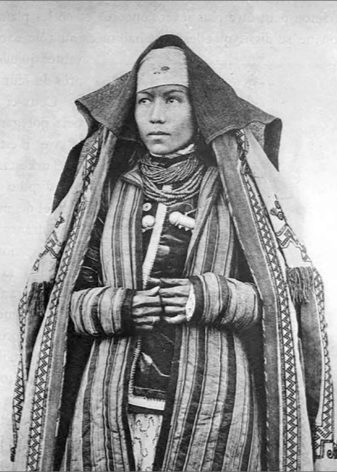

Uzbek women used soft boots without a back and heels, as well as models made of rough leather or rubber, as footwear. The latter, it is worth saying, are still popular to this day due to their excellent thermal properties and convenience.

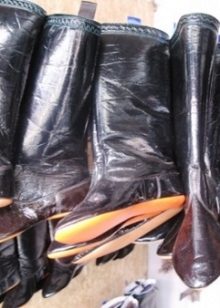

Men originally wore a skullcap as a headdress. Soft boots were worn as footwear. The Uzbeks of the upper strata of society also had ceremonial boots with a slight bevel towards the middle of the sole. This detail was intended for riders, helping them to stay more confident in the saddle.
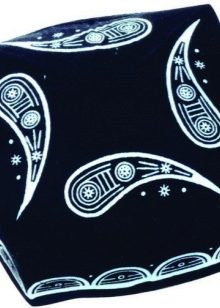
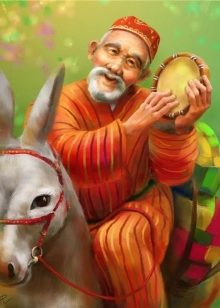
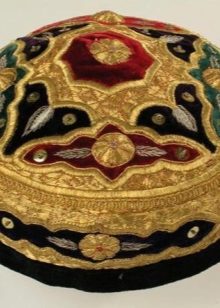
Modern models
The beauty of the East has always captivated Europeans. It is not surprising that even today modern clothing models are being created, inspired by the mood of alluring, closed and at the same time very hospitable Uzbekistan.



- A suit with a short wide robe and skullcap, embroidered with symbols and floral motifs, amaze with a riot of colors and their harmony. The colorful costume is complemented by a large amulet pendant.
- A bright dress with an elasticated waist, made in typical Uzbek colors, enhanced with slits at the shoulders and wide sleeves.
- A tunic dress and pants look very modern, because the latter have a tapered cut, outlining a feminine figure.
